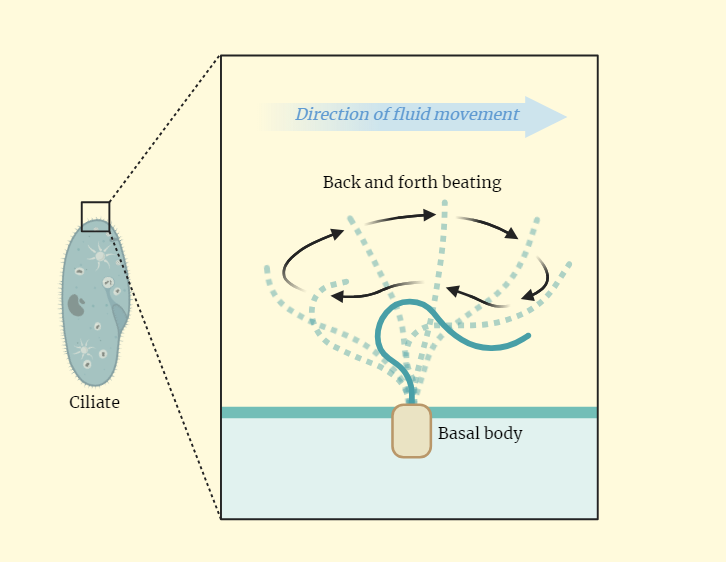Table of Contents
Introduction
Ciliary movement is the coordinated movement of cilia, which are small, hair-like projections found on the surface of certain types of cells. Cilia are used for a variety of physiological processes, including cell motility, fluid flow, and the detection of chemical and mechanical signals. In this study note, we will explore the process of ciliary movement in detail, including the molecular machinery that drives ciliary movement and the various physiological processes in which cilia are involved.
Structure of Cilia
- Cilia are composed of microtubules, which are cylindrical protein structures that form the core of the cilium. These microtubules are arranged in a specific pattern, called the “9+2” arrangement, where nine outer microtubules surround a central pair of microtubules. The microtubules are anchored at their base to a structure called the basal body, which also serves as the site of ciliary assembly and disassembly.
- In addition to the microtubules, cilia also contain a number of other types of proteins, including motor proteins that drive ciliary movement, signaling molecules that detect and respond to external signals, and structural proteins that help to maintain the shape and stability of the cilium.
Process of Ciliary Movement
- The movement of cilia is driven by a complex system of motor proteins, known as dyneins, which are located on the inner surface of the cilium. These dyneins interact with the microtubules to generate the force that powers ciliary movement.
- In order for ciliary movement to occur, the dyneins must be activated by a series of biochemical signals, which are triggered by various factors, such as changes in the chemical or mechanical environment. Once activated, the dyneins work together to generate the force that is necessary to bend the cilium, thereby propelling the cell along or moving fluids around the cell.
- The coordinated movement of cilia is known as metachronal wave. This is because the cilia on a cell beat in a coordinated manner, with a small time lag between neighboring cilia, resulting in a wave-like movement that propels the cell or fluid.
Examples of Ciliary Movement
- Mucociliary Clearance: In the respiratory tract, cilia beat in a coordinated manner to move mucus and trapped particles, such as dust and bacteria, up and out of the lungs. This is known as mucociliary clearance, and it is an important mechanism for keeping the lungs clear of harmful particles.
- Fluid Flow: In the reproductive and urinary tracts, cilia beat in a coordinated manner to move fluid and sperm. This is important for the transport of eggs and sperm during fertilization.
- Cell Motility: In single-celled organisms such as algae and protozoa, cilia are used for cell motility. They beat in a coordinated manner to move the cell through its environment in search of food or a suitable habitat.
Conclusion
Ciliary movement is a complex process that is driven by a system of motor proteins and biochemical signals. Cilia play an important role in a variety of physiological processes, including cell motility, fluid flow, and the detection of chemical and mechanical signals. Understanding the process of ciliary movement is crucial for understanding the physiology of many organisms and for the development of new treatments for diseases caused by cilia malfunction. Future research in this field will likely focus on uncovering the molecular mechanisms underlying ciliary movement and the development of new strategies for targeting cilia-related disorders.
